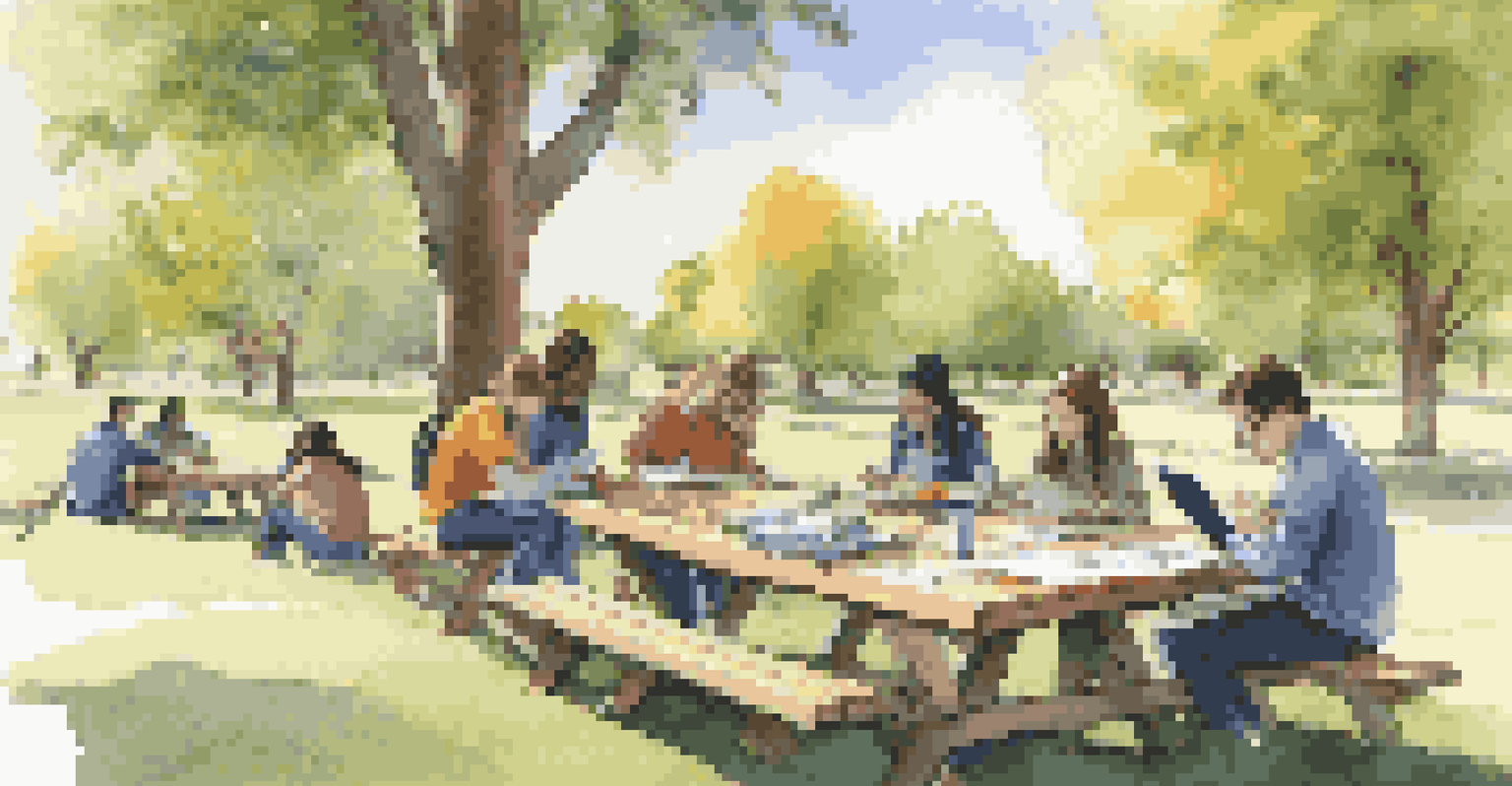Creating a Transmedia Learning Hub for Educators

Understanding Transmedia Learning and Its Importance
Transmedia learning refers to the use of multiple platforms and formats to create a cohesive educational experience. This approach allows educators to engage students through various mediums, such as videos, podcasts, and interactive games. By integrating storytelling across these platforms, educators can enhance comprehension and retention of complex concepts.
Storytelling is the most powerful way to put ideas into the world today.
Imagine a history lesson where students not only read texts but also interact with a virtual museum, watch documentaries, and participate in discussions on social media. This dynamic method caters to different learning styles, ensuring that visual, auditory, and kinesthetic learners all find something that resonates with them. In turn, this fosters a deeper connection to the material.
Ultimately, the goal is to create an immersive learning environment that transcends traditional classroom boundaries. By embracing transmedia, educators can prepare students for a world where information is constantly flowing through diverse channels, making adaptability and critical thinking essential skills.
Identifying Key Learning Objectives for Your Hub
Before diving into the creation of your transmedia learning hub, it's crucial to establish clear learning objectives. What do you want your students to achieve? These goals will serve as the foundation for your content and the various media you choose to incorporate. Whether it's fostering critical thinking or enhancing collaboration skills, having a clear vision will guide your project.

For instance, if you're teaching science, your objectives might include understanding the scientific method and applying it to real-world problems. This clarity will help you select relevant content types that align with your objectives, such as interactive simulations or video interviews with scientists. Each piece of content should contribute meaningfully to the overall learning experience.
Transmedia Learning Enhances Engagement
Utilizing multiple platforms and formats creates a cohesive educational experience that caters to diverse learning styles.
Moreover, consider the assessment methods you'll use to measure student progress. By aligning your learning objectives with assessment strategies, you create a comprehensive framework that supports both teaching and learning. This alignment ensures that your transmedia hub is not just engaging, but also effective.
Choosing the Right Platforms for Your Content
With your learning objectives in place, it's time to select the platforms for your transmedia learning hub. The right choice depends on your audience and the types of content you'll be creating. Popular platforms include websites, social media, and learning management systems, each offering unique advantages for content delivery.
Education is not the filling of a pail, but the lighting of a fire.
For example, if you're targeting younger students, interactive games or video content might be more engaging than lengthy articles. On the other hand, older students may benefit from in-depth podcasts or research articles that encourage critical thinking. The key is to choose platforms that complement your content and resonate with your audience.
Additionally, consider the accessibility of each platform. It's essential that all students can easily access and navigate the content. This inclusivity not only helps in reaching a wider audience but also fosters a sense of community among learners, enhancing the overall educational experience.
Creating Engaging and Diverse Content
Creating diverse content is the heart of a successful transmedia learning hub. This means integrating various formats like text, video, audio, and interactive elements to cater to different learning preferences. A mix of content types keeps students engaged and allows them to interact with the material in multiple ways.
For instance, if you're teaching literature, you might include video summaries of novels, audio readings, and interactive discussion forums. These varied approaches not only maintain student interest but also deepen their understanding of the subject matter. The more ways students can engage with the content, the more likely they are to retain information.
Clear Objectives Guide Content Creation
Establishing clear learning objectives is essential for aligning content and assessment methods within a transmedia hub.
Moreover, don’t shy away from involving students in content creation. Encouraging them to produce their own videos or podcasts can foster a sense of ownership and enhance their learning experience. This collaborative approach not only enriches the learning environment but also equips students with valuable skills for the future.
Incorporating Storytelling to Enhance Learning
Storytelling is a powerful tool in education, and it plays a crucial role in transmedia learning. By weaving narratives into your content, you can create emotional connections that make the material more relatable and memorable. Stories can turn abstract concepts into tangible experiences, capturing students' attention and sparking their curiosity.
Consider using case studies or real-life scenarios to illustrate complex ideas. For example, if you're teaching about climate change, sharing stories of individuals or communities affected by it can make the topic more impactful. This approach not only engages students but also encourages them to think critically about real-world issues.
Additionally, storytelling can be enhanced through multimedia elements, such as animations or interactive timelines. By presenting information in a narrative format, you're not just teaching; you're inviting students to join a conversation that transcends traditional learning methods.
Facilitating Collaboration and Community Building
A transmedia learning hub should also serve as a space for collaboration and community building among students. By incorporating forums, discussion boards, or group projects, you encourage learners to connect and share ideas. This interaction not only fosters a sense of belonging but also enriches the learning experience through diverse perspectives.
For instance, you could create a project where students collaborate on a multimedia presentation, pooling their skills and insights. This not only reinforces the content but also helps develop teamwork and communication skills. Encouraging students to engage with one another can lead to deeper discussions and a more vibrant learning environment.
Collaboration Builds Community Skills
Incorporating collaborative elements fosters a sense of belonging and enhances critical thinking among students.
Furthermore, consider incorporating peer feedback mechanisms, allowing students to critique and learn from each other's work. This collaborative approach not only builds community but also enhances critical thinking and reflection, key skills for lifelong learning.
Evaluating and Iterating Your Learning Hub
Once your transmedia learning hub is up and running, the work isn't over. Continuous evaluation is essential to ensure that your content remains relevant and effective. Gathering feedback from students can provide valuable insights into what's working and what needs improvement. This iterative process allows you to refine your approach and enhance the overall learning experience.
Consider using surveys or informal discussions to gather student feedback. Ask questions about their engagement, understanding, and preferences for content types. By actively seeking their input, you demonstrate that their opinions matter, fostering a sense of ownership and investment in their learning.

Additionally, stay informed about new trends and technologies in education. As the landscape evolves, so should your transmedia hub. By being open to change and willing to try new approaches, you can keep your content fresh and engaging, ensuring that your hub remains a valuable resource for educators and students alike.